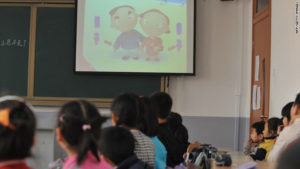
Pic source: Healthprash
Evidence about the effectiveness of Comprehensive Sexuality Education (CSE) in preventing teenage pregnancies, delaying sexual debut and decreasing risky sexual behaviours are abundant and clear.
A global review by the famed Cochrane library of 53 very strong evidence studies in 2016 comparing the different educational interventions in preventing unintended pregnancies including faith based teachings, health education alone or combination teachings had shown that ONLY health education and contraception education in combination had shown to decrease unintended pregnancies in the medium term.
So why is Malaysia after 50 years of independence still reluctant to have a national policy and commitment to implement CSE?
Why do we still insist on teaching sexuality education in bits and pieces by reluctant and ill-equipped educators?
Is is because of the myth that sexuality education leads to increase and earlier sexual activity which has been debunked many times?
Is it because we steadfastly cling on to the belief that only preaching there should be no sex before marriage ie the abstinence based method without any evidence that such an approach are proven to decrease teenage pregnancies?
Is it because we prefer to ignore and pretend that teenage pregnancies, abortions, baby dumping and sexually transmitted diseases do not occur in Malaysia, the “see no evil, hear no evil” approach?
Is it because we Malaysians are too uncomfortable and too shy to talk about sex because our parents do not talk about it either as it is a taboo subject?
International standards in CSE includes the 5 topics of CSE:
- Sexual and reproductive physiology
- HIV/sexually transmitted infections (STI) prevention
- Contraception and unintended pregnancy
- Values and interpersonal skills
- Gender, sexual and reproductive rights

Pic source: CNN
To be comprehensive, all 5 topics must be included in school based curriculum starting from primary school to secondary school introducing topics that are age appropriate by trained teachers who can deliver them in a supportive, non judgmental and factual approach. What seems to be the case in Malaysia is that reproductive biology is taught more often but the other areas are taught least or largely ignored.
A Nationwide study on University students in Malaysia published in 2012 had shown that 90% of respondents agreed that sex education is NOT taught in Malaysian schools as defined by the UNESCO 2009 curriculum on sex education.
CSE has been shown to improve knowledge, self esteem & confidence, positively change sexual norms and gender attitudes as well as improve communication skills.
A Malaysian study done in 2009 among parents showed that 73% supported various sexual health topics in schools provided the contents were in line with religious teachings including topics such as birth control, intimate healthy relationship, teenage pregnancies etc.
Another study done on Malaysian university students in 2012 had shown that 49% of respondents thinks sex education can curb social ills in schools and 77% agreed that the module can be incorporated with other core subjects.
So how we deliver it, whether its on its own or incorporated with other core subjects, students, parents and the communities including healthcare professionals and activists all think its a good idea as long as we make it comprehensive to include all 5 topics and provide trained teachers who are able to deliver these teachings comprehensively.
So what are we waiting for Malaysia? Why are we still denying our young people to lead a healthy and well informed lives free of unintended pregnancies, abortions and baby dumpings?
Dr John Teo is an Obsteatrician & Gynaecologist in Sabah. He serves as a Medical Advisor to the state Family Planning Association and is extensively involved in contraceptive and HPV prevention teachings nationwide. He has a deep passion for women’s health and reproductive rights.
This is the personal opinion of the writer and does not necessarily represent the views of The Malaysian Medical Gazette.
[This article belongs to The Malaysian Medical Gazette. Any republication (online or offline) without written permission from The Malaysian Medical Gazette is prohibited.]
